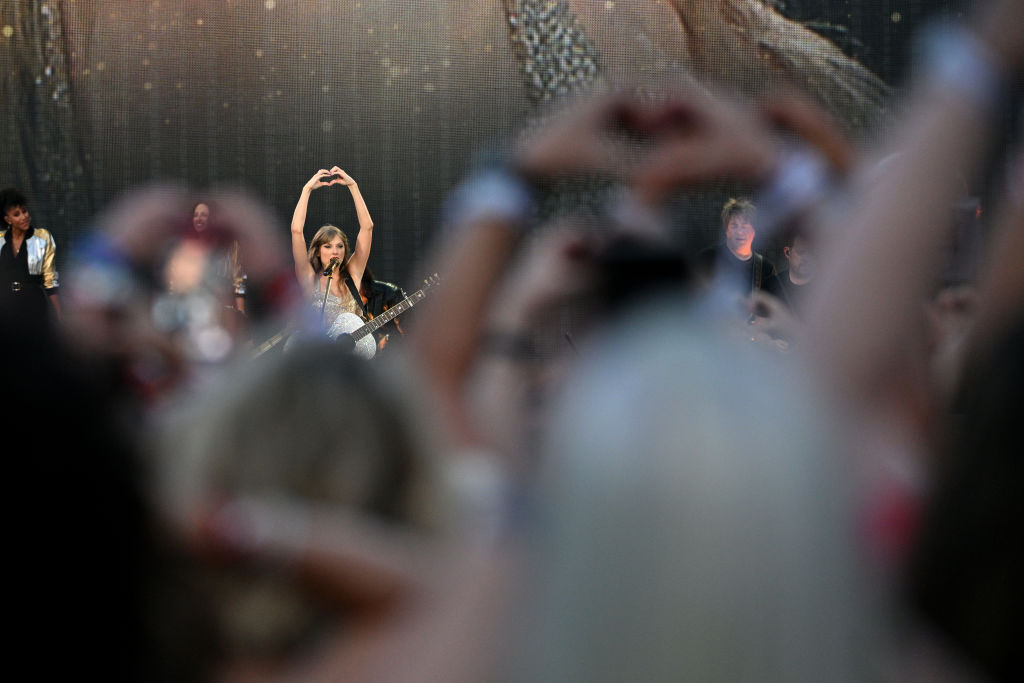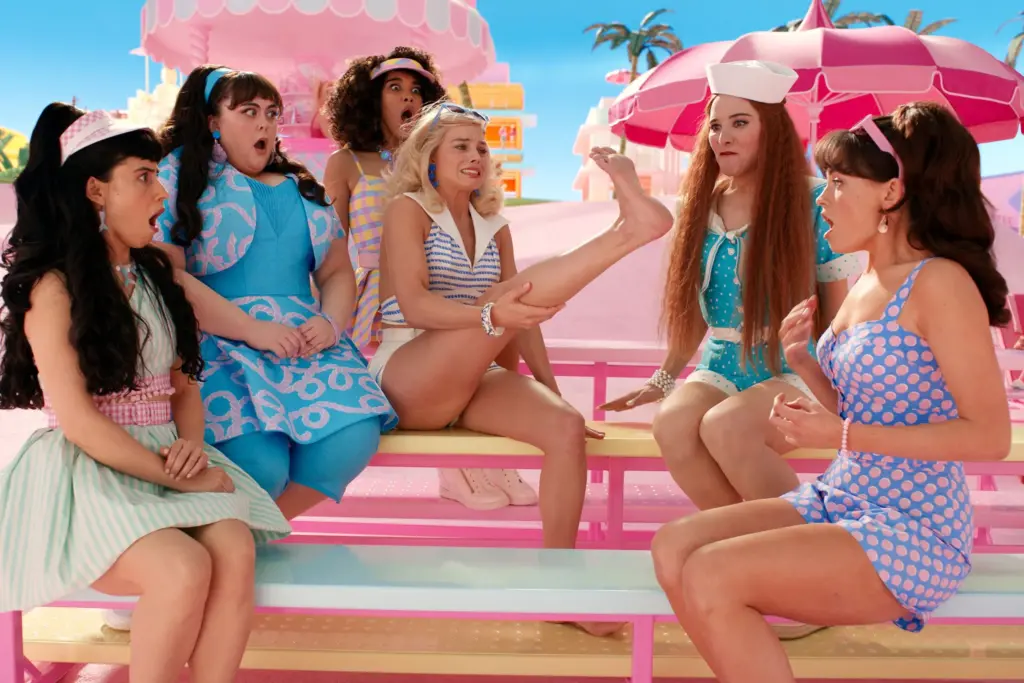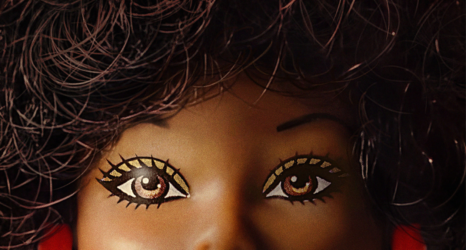Girls are showing up, shaping popular culture for the better. Their choices tell us about friendship, connection, and how to forge joy in this world.

This story originally appeared on Jill.substack.com, a newsletter from journalist, lawyer and author Jill Filipovic.
Two summers ago, I was on one of the writing retreats I host in Italy, walking with a friend under a canopy of Tuscan pines after one of our group writing workshops. We were talking about the group dynamic—how everyone was generous with their thoughts and time, that this all-female group made space for others’ perspectives, took risks to foster intimacy, and seemed to go out of their way to include everyone.
We both noted that it’s not always like this; any group of human beings can be competitive or mean or manipulative or ostracizing, and one common group dynamic is to pick a scapegoat who everyone else marginalizes or makes fun of. But I said that, in my experience on these trips, women coming together for a shared purpose and shared pleasure are pretty great to each other. And my friend said: “Girls are just really good.”
I keep thinking of that line—girls are just really good—as I watch this summer’s girl-frenzy over Taylor Swift and the Barbie movie.
For the record, I have seen neither—but man, is it great to see Girl Culture taking over, and to see so many girls jump into group bonding experiences, participating in what Barbara Ehrenreich calls “collective joy.” Girls singing together, dancing together, dressing up together, entering joyful girl-centric spaces guilelessly and unselfconsciously—I’m not a part of it, but I love to see it.
Both Taylor and Barbie are breaking records. The Barbie movie saw the largest-ever North American opening weekend debut from a female director. Taylor Swift has more #1 albums than any female musician in history, and her Eras tour is set to be the highest-grossing tour of all time. The tour is so huge that the Federal Reserve has noted its economic ripple effects. (Beyoncé, too, has been on a record-breaking tour, but as far as I can tell, her audience is largely made up of adult women.)
And it’s not just that girls are buying concert and movie tickets. Girls are making the Taylor Swift show and the Barbie movie ecstatic events. They’re going in groups, sometimes getting on airplanes and staying in hotels, spending weeks vibrating with excitement, making a weekend out of a one-night show, carrying that joy with them back home. They’re singing together and crying together and taking over the men’s bathrooms. They’re donning Barbie outfits, usually with copious pink, and getting the whole crew to the theater. These are not solo endeavors. These are girls using these events to strengthen bonds with their friends and often their parents, and to connect with a much larger group of mostly-girls (and some boys) over a shared passion, a shared experience, a shared history, and shared delight. One friend referred to the Eras tour as the “White Girl Super Bowl,” and that sounded about right to me.
Not every girl can afford to attend these events, the Taylor Swift concert in particular. Not every girl is going to feel connected to Swift’s music, or to Margot Robbie as Barbie. Looking at photos of Swift’s concert crowds, the audience looks pretty white. I’m on record as someone who is lightly anti-Barbie (the doll, not the movie); it’s great that Barbie has a bunch of jobs now, but she’s not the feminist icon I would choose. So this is not to say that all of Girl World is perfectly feminist or perfectly represented in this particular girl-centric summer. It is to say, though, that a lot of girls are showing up, they’re shaping popular culture for the better, and their choices tell us something important about friendship, connection, and how to forge joy in this world—and maybe we could learn something from them.
The power of crowds is often discussed in the negative. … But crowds have also, throughout nearly all of human history, been spaces for joy, connection, mutual assistance and tremendously pro-social behavior.
The group dynamics of these events—the sense of solidarity, the rush of the crowd—are central to their appeal. This feels especially powerful as we come out of two years of a pandemic, when being in a crowd felt, to many of us, stressful and unsafe. Young people bore the brunt of this: There is perhaps no time in one’s life when social interactions feel as high stakes, and when the thrill of a concert or a crowd is more intense because it’s such a new experience, as one’s teenage years. We all lost precious time during COVID. Teenagers lost key developmental and social years.
The power of crowds is often discussed in the negative. Crowds can turn into mobs or riots; crowds can bring out the worst in people, giving us social license to engage in acts we otherwise wouldn’t. Sometimes crowds kill.
But crowds have also, throughout nearly all of human history, been spaces for joy, connection, mutual assistance and tremendously pro-social behavior.
From journalist Dan Hancox’s wonderful feature about crowds for the Guardian:
“For most of us, a crowd can be an alluring thing, because the desire to be among the throng seems to be innate. Gathering together for ritualistic celebrations—dancing, chanting, festivalling, costuming, singing, marching—goes back almost as far as we have any record of human behaviour. In 2003, 13,000-year-old cave paintings were discovered in Nottinghamshire that seemed to show ‘conga lines’ of dancing women. According to the archeologist Paul Pettitt, the paintings matched others across Europe, indicating that they were part of a continent-wide Paleolithic culture of collective singing and dancing.
“In Barbara Ehrenreich’s 2007 book ‘Dancing in the Streets: A History of Collective Joy,’ she draws on the work of anthropologists including Robin Dunbar to argue that dancing and music-making was a social glue that helped stone-age families join together in groups larger than the family unit, to hunt and protect themselves from predators. For Ehrenreich, rituals of collective joy are as intrinsic to human development as speech. More recent experiments by Dunbar and his colleagues have suggested that the capacity of singing together to bond groups of strangers shows it ‘may have played a role in the evolutionary success of modern humans over their early relatives.'”
Collective awe—a group all sharing in feelings of amazement, wonder, and perhaps veneration—has the effect, researchers have found, of being a kind of social glue. Awe can make us more connected and more compassionate; it can facilitate integration into social groups. Being in a social group (or even with just one other person) when one has an interesting or extraordinary experience makes that experience all the better; sharing a special, unusual or extraordinary experience also “fosters feelings of closeness.” It may sound pretty spectacular to have Taylor Swift perform a private concert for you; in actuality, you’d probably enjoy going to the stadium show with a group of friends a lot more.
What humans collectively experience, though—what we’re allowed to enjoy, or encouraged to enjoy—is shaped by culture, law, and opportunity. Religious leaders have alternately tried to tamp down expressions of collective joy, or constrict them to worship. Social hierarchies have dictated which expressions of collective joy are considered morally licit (in America: Sunday worship, football games, rush week) or fun and cool (rock concerts, dance clubs). Girl culture has often been popular and extremely profitable. It has rarely been considered either morally licit or extremely cool.
The power of girls as consumers and taste-makers isn’t new. Girls fueled the rise of Elvis and the Beatles; girls were the force behind the ’90s and ’00s boy band craze, and the adjacent young blonde female pop star craze—think: Britney Spears, Christina Aguilera, Jessica Simpson. Girl culture, though, is often mocked and derided, and historically, many “serious” male artists have tried to avoid the stigma of having too many young female fans. Having tons of teenage boy fans is cool. Too many teenage girls, you’re cheesy.
Some of that stigma still sticks. And for feminists, Girl World can be a tricky place to walk through. Much of what we consider culturally “feminine,” whether that’s being sweet and submissive or wearing pink, has no biological basis, and no inherent connection to girlhood or womanhood; much of what we think of as feminine has been used to keep women and girls out of power and under control. Feminists have often questioned or rejected these characteristics and trappings of stereotypical femininity, and for good reason.
But there has also been pushback. Yes, men have had a monopoly on power, and have dominated in the social, cultural, political and economic realms, and so it makes sense to force open more space in those realms for women, and to create more space for women to exhibit stereotypically “masculine” behaviors, from taking on leadership roles to wearing pants.
But it might not be as great to denigrate the historically and / or stereotypically feminine along the way. Female submission to men? Sure, let’s get rid of that one.
But other feminized qualities, including generosity, kindness, caregiving, humility, gentleness and openness to collaboration? Those could certainly stand to be embraced by more people.

Feminized expressions—from the color pink to long hair to wearing skirts—could have everything to do with personal preference and nothing to do with biological sex. Feminists should (and do) question the way that feminine presentation—the Barbie ideal—keeps women and girls small by placing a high premium on our physical appearance, and demanding that we spend copious amounts of time, money and emotional energy in a never-ending loop of aspiration and self-loathing.
But some of us also look at the fact that human beings have sought to beautify themselves for millennia, in millions of different manifestations, and wondered: Can we keep some of the pageantry, and scrap the patriarchy?
I don’t know the answer. But today’s Barbie girls and Swifties seem to be trying. As the gender binary continues to collapse, the stigma around “girly” things also seems to be decreasing, and young women (and a lot of young men) seem to see girliness as an attribute they can pick up and put down at will—and one that isn’t necessarily in conflict with, and can actually be complimentary to, feminist beliefs.
Which is exactly why so many conservatives are losing their minds over the Barbie movie.
Charlie Kirk called the film “trans propaganda.” Ted Cruz said it’s Chinese propaganda. Fox News talking heads called it woke propaganda. Ben Shapiro burned Barbie in effigy. The complaint seems to be that the Barbie movie took a symbol of patriarchy and transformed her into a feminist—horror of horrors.
But the truth is that conservatives have always found it threatening when Girl Culture inevitably moves from the pink and sweet into something more complicated. The teeny boppers who made Elvis and the Beatles household names were also sources of great conservative consternation because, well, a lot of those girls seemed pretty turned on by the men whose concerts they swarmed. Girls exhibiting sexual desire, girls deviating from the wishes of their parents, girls exhibiting a sense of their own potential power—this is all very upsetting for people who want girls to know their place in the world.
It may sound pretty spectacular to have Taylor Swift perform a private concert for you; in actuality, you’d probably enjoy going to the stadium show with a group of friends a lot more.
Just to be clear, the fact that I think girls are good doesn’t mean I think girls are always nice, or are somehow better than boys, inherently or biologically or socially. Girls, being human, can be all of the things human beings can be: cruel, venal, violent, manipulative. When my friend commented that “girls are good,” it stuck with me because there are aspects of girliness and the way that (not all) girls and women tend to bond that strike me as really useful and really powerful. We spend a lot of time pathologizing girlhood, and rightly worry about how girls will navigate a world that is so often so cruel to them. It’s worth pausing to admire the many things that so many girls are doing pretty well.
I don’t miss being a girl or a teenager, and life remains pretty damn hard for young people. But when I see the Swifties in their ecstatic thrall, or the pink-clad Barbie hordes stampeding toward the theater, I think: We could all use a little more of that sincerity and exuberance in our lives.
Most of us could find more joy in community. And maybe, if we suspended our cynicism and our self-consciousness and gave ourselves over to the collective and the effervescent, we could find something extraordinary.
Up next:
U.S. democracy is at a dangerous inflection point—from the demise of abortion rights, to a lack of pay equity and parental leave, to skyrocketing maternal mortality, and attacks on trans health. Left unchecked, these crises will lead to wider gaps in political participation and representation. For 50 years, Ms. has been forging feminist journalism—reporting, rebelling and truth-telling from the front-lines, championing the Equal Rights Amendment, and centering the stories of those most impacted. With all that’s at stake for equality, we are redoubling our commitment for the next 50 years. In turn, we need your help, Support Ms. today with a donation—any amount that is meaningful to you. For as little as $5 each month, you’ll receive the print magazine along with our e-newsletters, action alerts, and invitations to Ms. Studios events and podcasts. We are grateful for your loyalty and ferocity.





